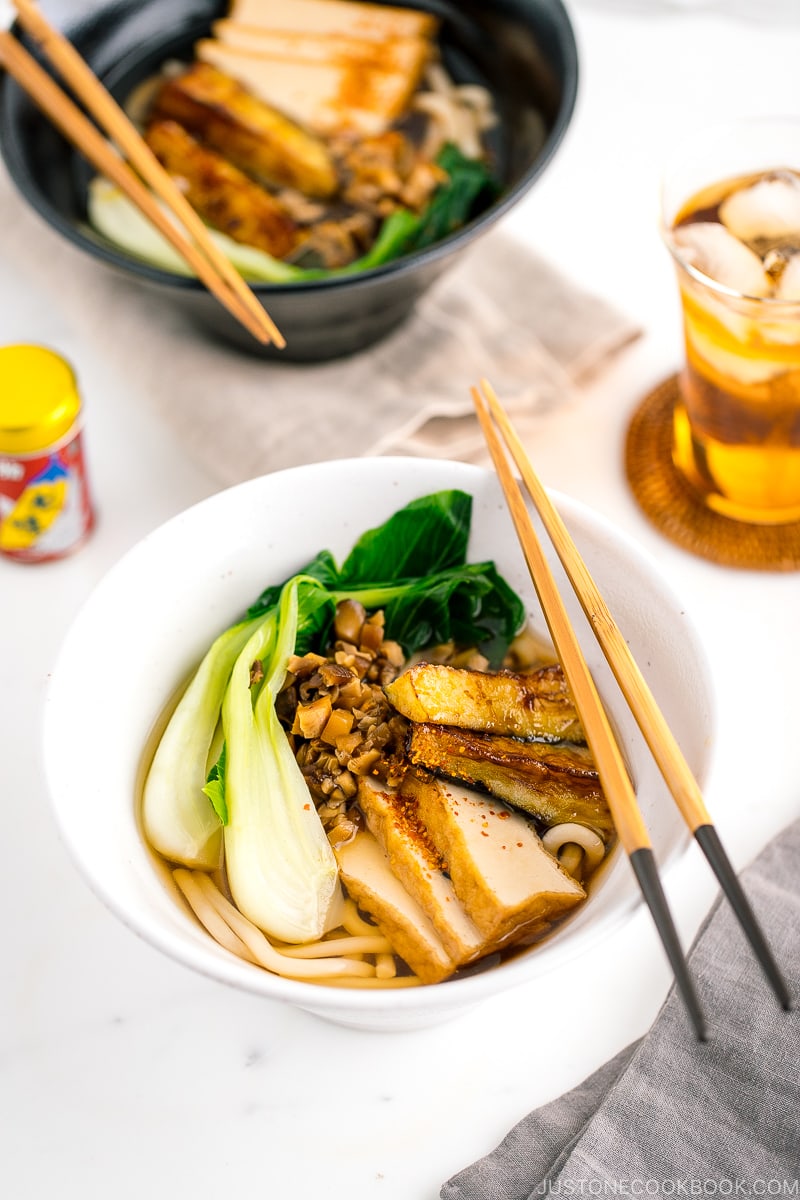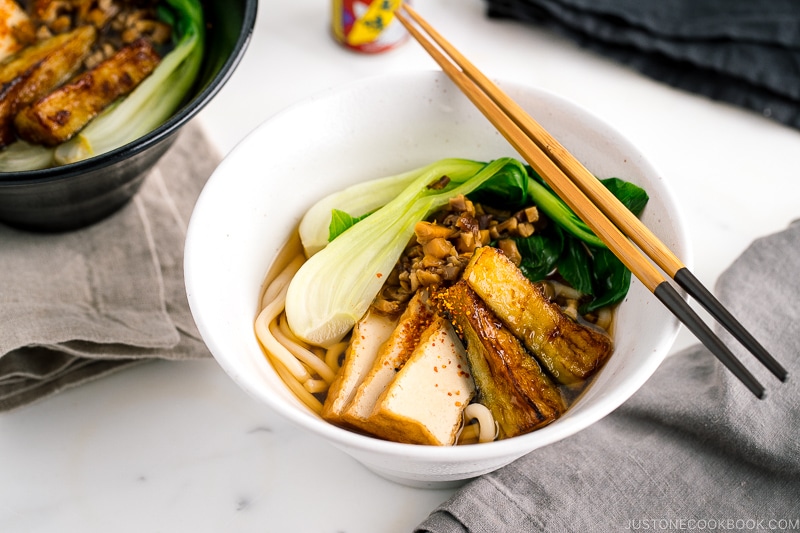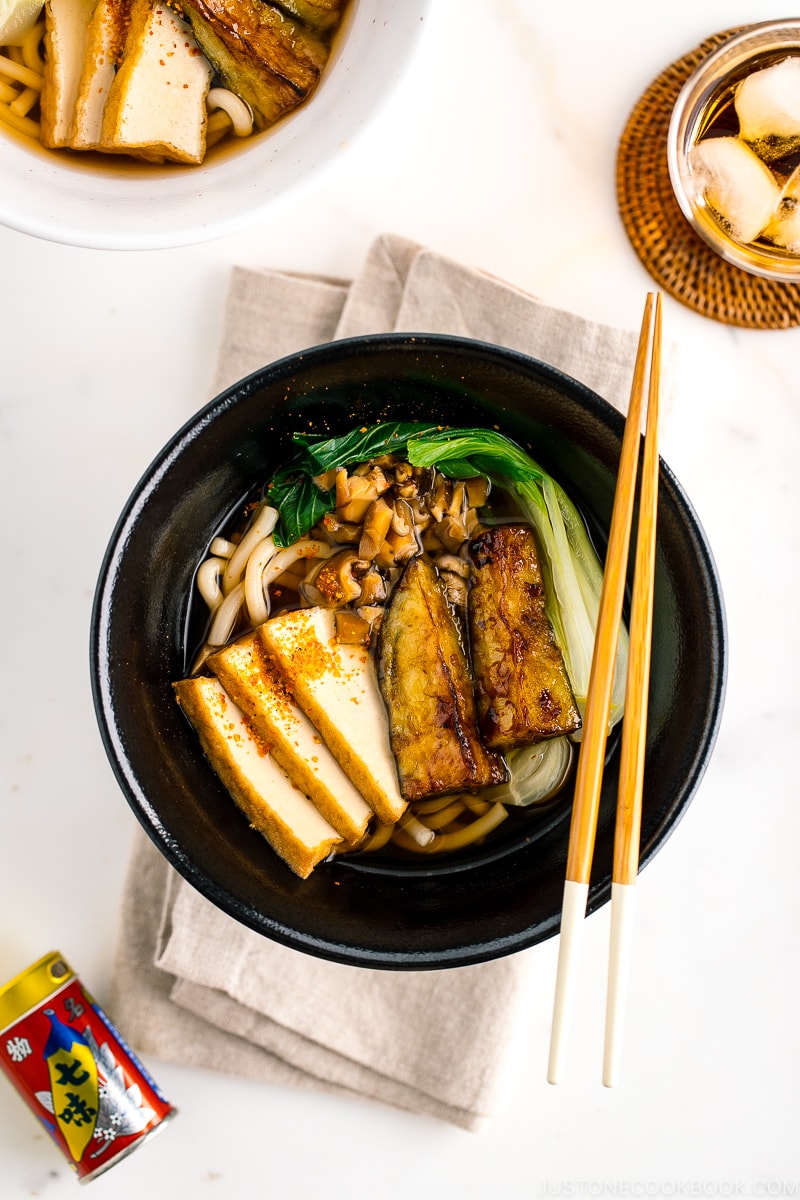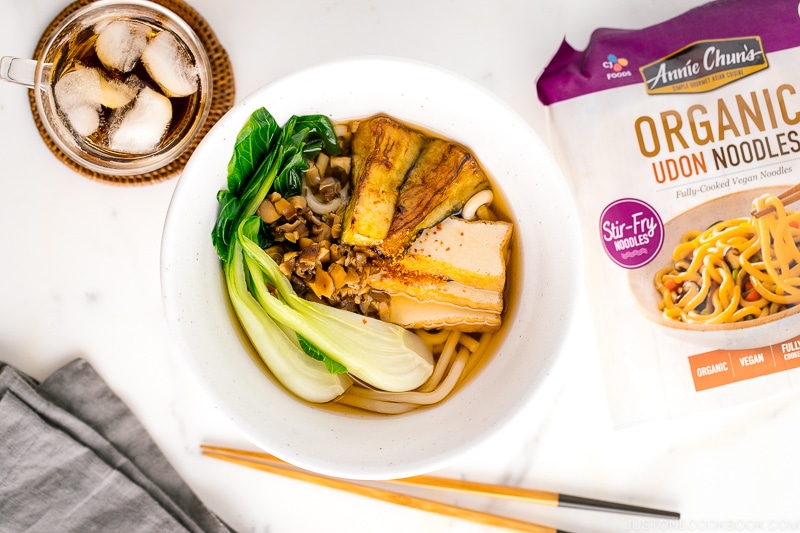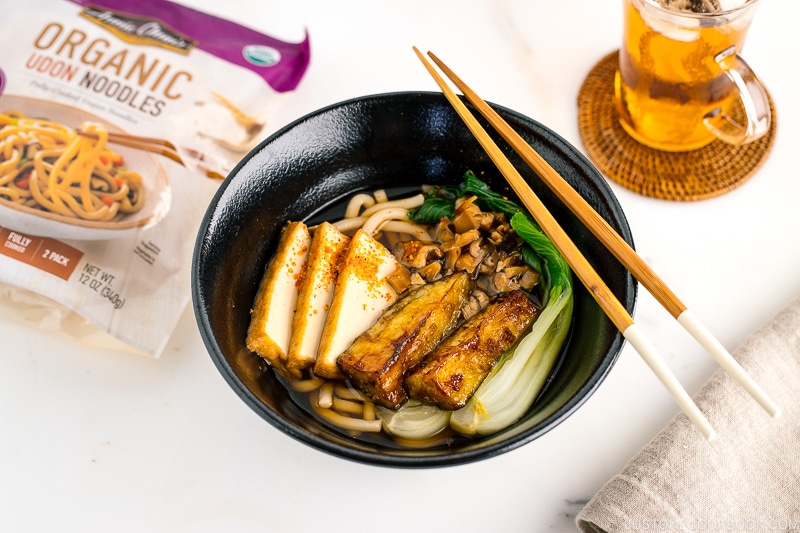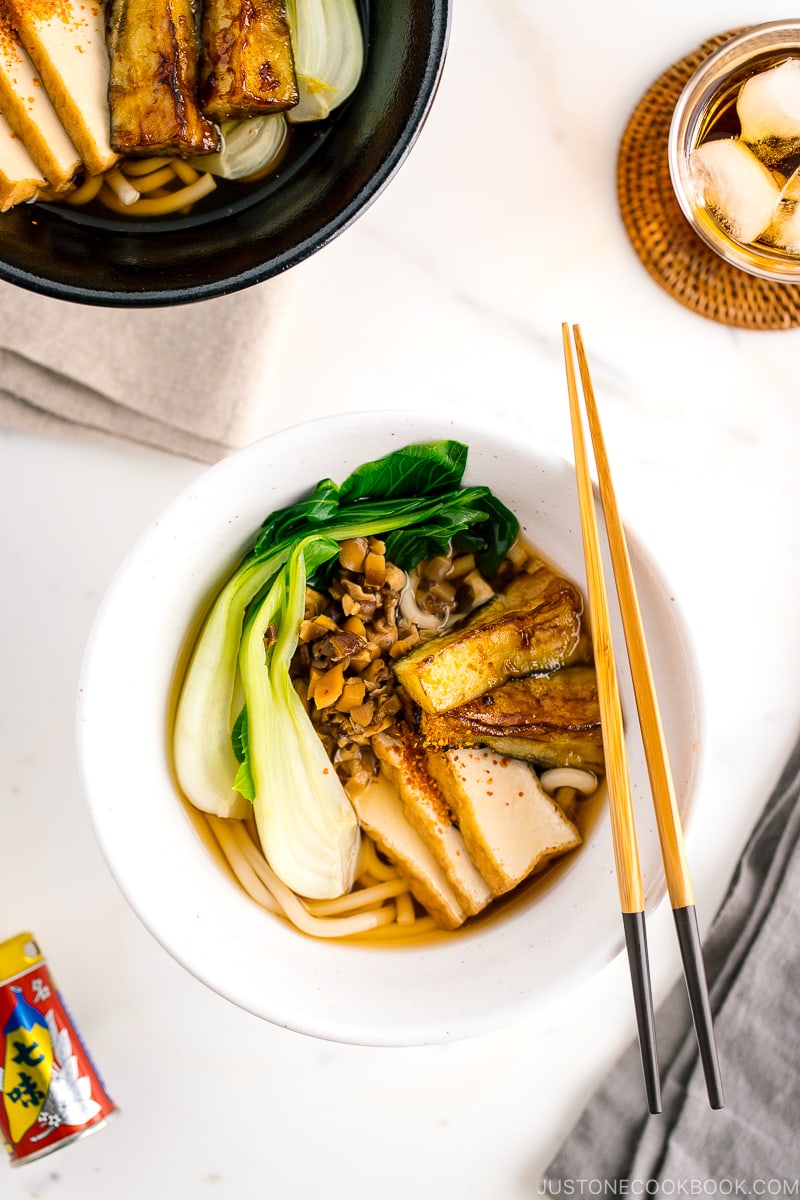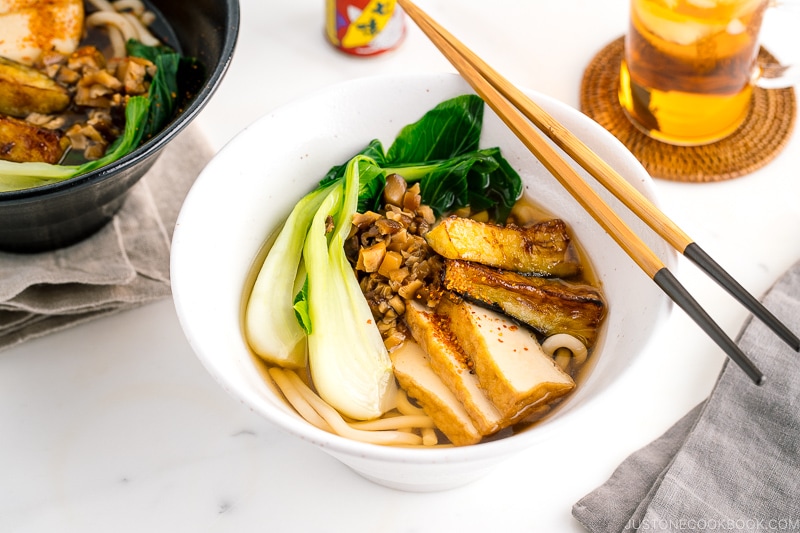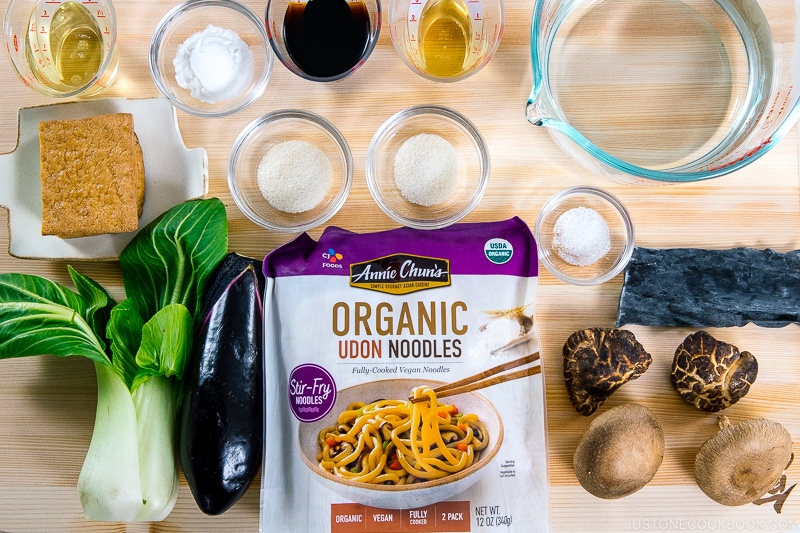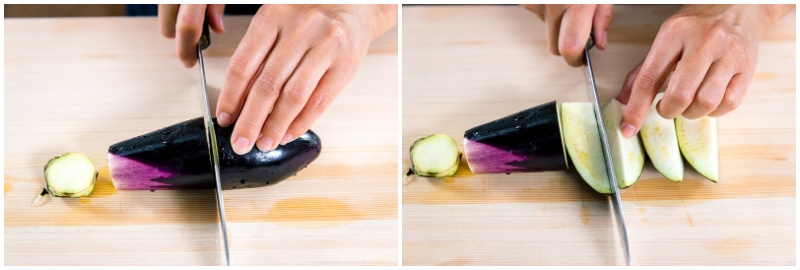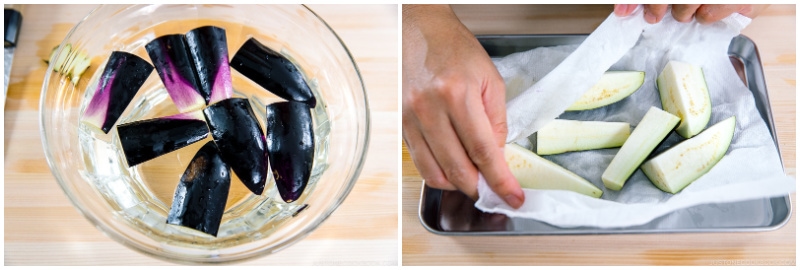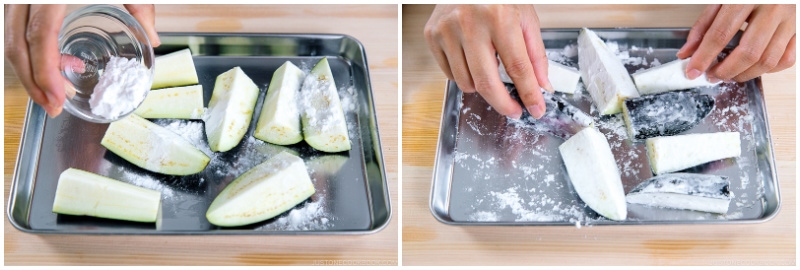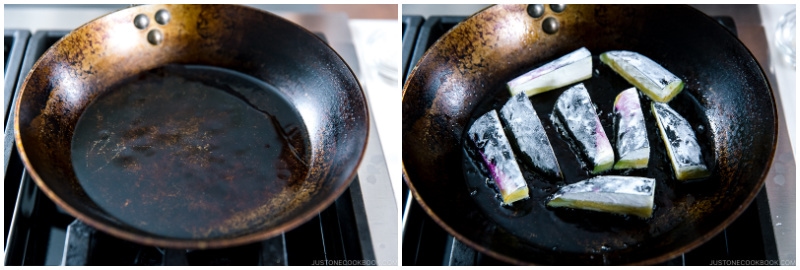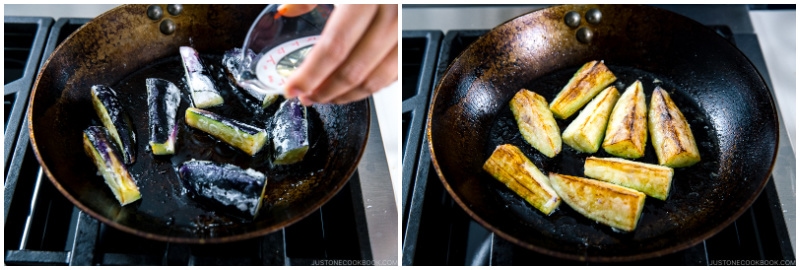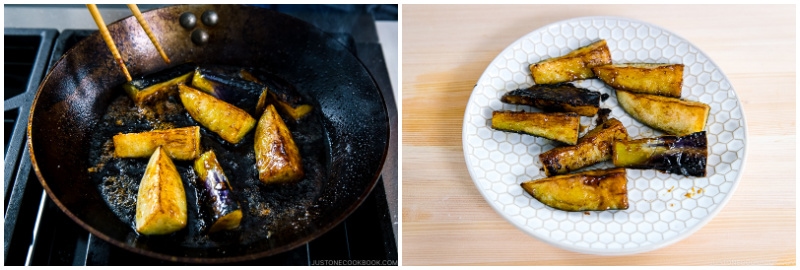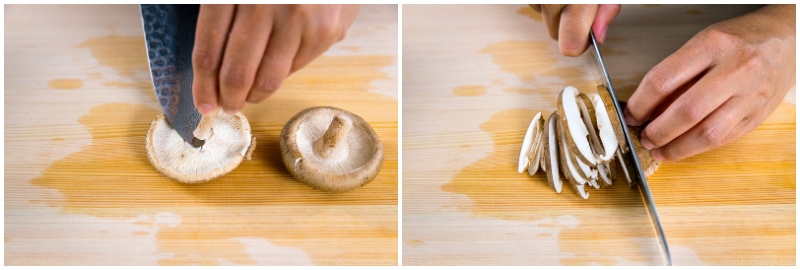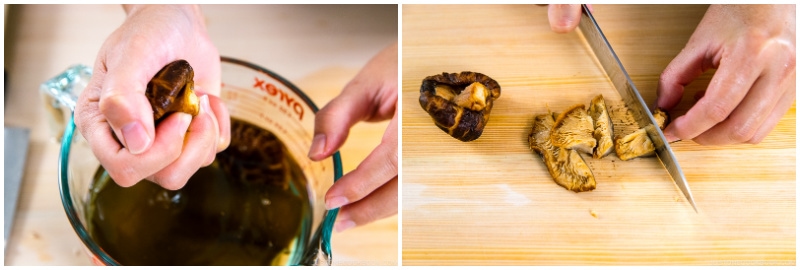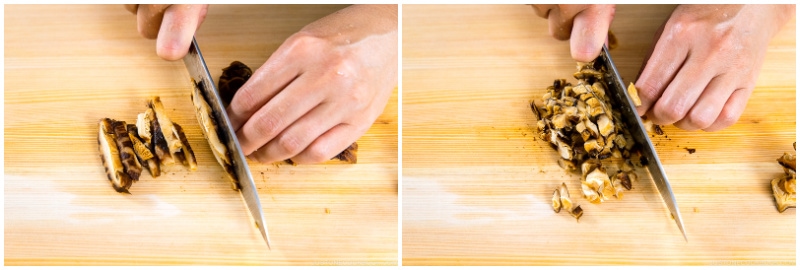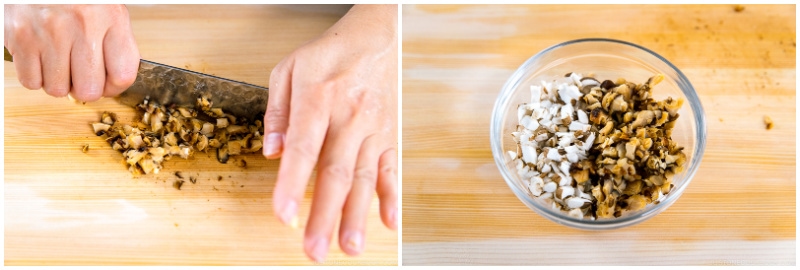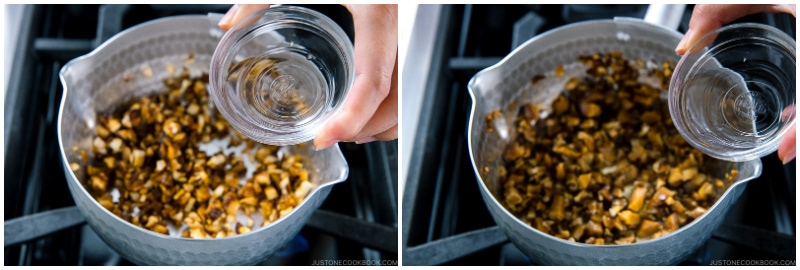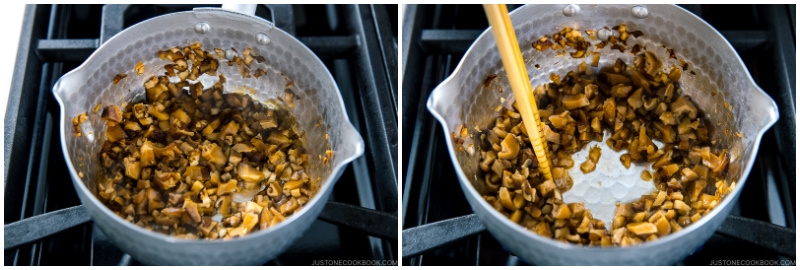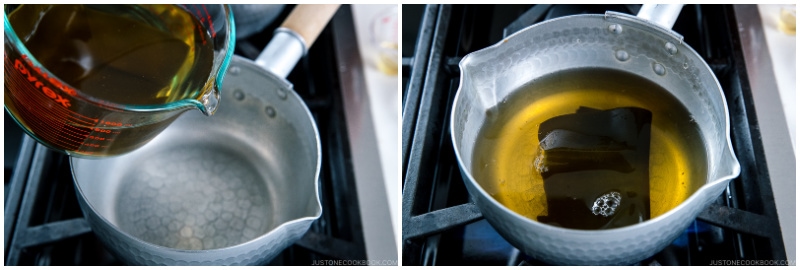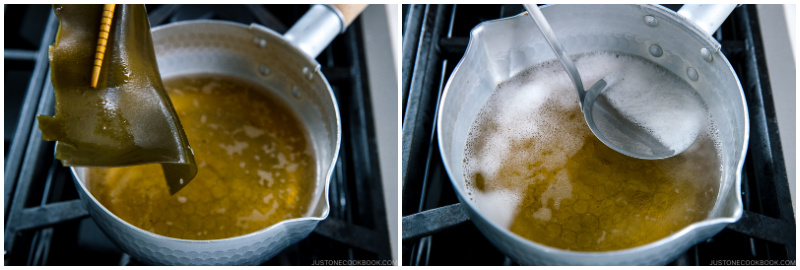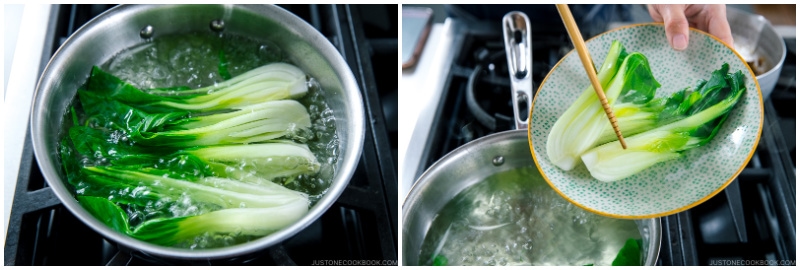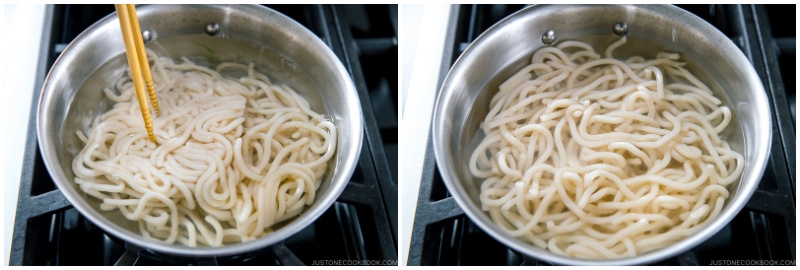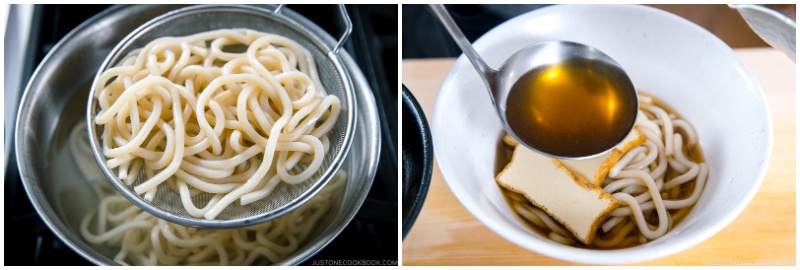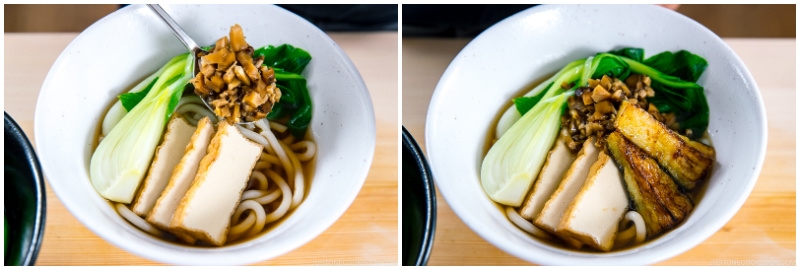One of my recent challenges has been creating more vegetarian and vegan recipes that are family-approved. They’re a tough crowd when it comes to judging my cooking, but this Vegetarian Udon absolutely won their hearts. It’s light and delicate, yet so flavorful and comforting—we never get tired of it. The best part? You can easily customize it with whatever you have on hand. Let me show you how I’ve been making this noodle soup!
Why You’ll Love This Vegetarian Udon Noodle Soup
The best dashi broth that is vegan and vegetarian friendly. Light yet incredibly flavorful — It’s the power of umami-rich ingredients! 3 easy cooking steps — Make the soup broth, prepare the toppings, and heat the udon noodles right before assembling. Versatile — Add any toppings you like to keep the dish interesting! Make-ahead — You can prepare the soup broth in advance and use it within 3-4 days. My non-vegan family approved — By that, it means the udon soup is so flavorful and satisfying that they didn’t miss the meat or fish in the broth or toppings.
3 Key Ingredients for a Delicious Vegetarian Udon!
1. Vegan Dashi (Japanese Soup Stock)
I hope all my vegan and vegetarian readers try making udon noodle soup with dashi instead of vegetable broth. Many people don’t realize that dashi can be vegan or vegetarian, as it’s sometimes translated as “seafood stock.” As I mentioned in my ultimate dashi guide post, you can create authentic Japanese flavor by using dashi made with just kombu and dried shiitake mushrooms. The right soup stock will give your Japanese cooking a subtle yet rich umami character.
2. Sweet and Savory Minced Mushrooms
First, I rehydrated the dried shiitake mushrooms to extract their umami and used the liquid for the broth. Instead of tossing the mushrooms away, I minced them and used them as a topping for the udon soup. They’re practical and economical, so no mushrooms go to waste! If you prefer to use the mushrooms for something else, save them for a stir-fry, hot pot, or as an addition to rice.
3. Crispy Tofu & Fried Seasoned Eggplant
When I think of a satisfying ingredient for my omnivore family, I need savory and hearty food for maximum enjoyment. I love using both fried tofu and eggplant in this dish because frying enhances the overall flavor. Some of you might want to keep it “healthier” by avoiding oil, and that’s okay. But if you’re all for delicious bites, definitely try this. Think about it this way: Between fried tofu and regular tofu, which one is more flavorful? I used ready-fried tofu in this recipe and only needed to fry the eggplant. Eggplant acts like a sponge, absorbing all the flavors from the seasoning! Make sure to coat the eggplant with potato starch (or cornstarch) for extra crispiness. This step is really important!
What Types of Udon Noodles
I recently discovered Annie Chun’s Organic Udon Noodles and was impressed by the quality and convenience of the product. I had been using frozen or refrigerated udon noodles, but I didn’t realize that there are udon noodles like these that are fully cooked and sealed for freshness. You can easily store them in a cool, dark place or kitchen pantry and use them whenever you need them! How cool is that? Annie Chun’s Organic Udon Noodles are:
Organic and high in quality. Able to be stored in the pantry (yes, at room temperature). Pre-cooked, so you can put together a tasty meal in a flash!
It’s great for emergencies, and you can keep your refrigerator or freezer space open for other foods. If you can find frozen Sanuki Udon in Asian markets, then it would be the best. Prefer fresh udon noodles? Try making my Homemade Udon Noodles!
10 Helpful Cooking Tips
Substitutions
Kombu and Dried Shiitake Mushrooms: These are key ingredients for the broth. You can use just one of them, but I strongly recommend using both, as each provides distinct umami flavors. If you have no access to either ingredient, vegetable broth is your last resort, though it will unfortunately lack authentic Japanese flavors. Fresh Shiitake Mushrooms: I use these to add more volume to the minced dried shiitake mushrooms. You can substitute any mushrooms, such as portobello or king oyster. Eggplant: You can substitute with zucchini, potatoes, sweet potatoes, or roasted squash. Fried Tofu: You can use crispy baked tofu or regular tofu (but avoid silken tofu, as it breaks easily). Bok Choy: Any green veggies can add freshness. I prefer leafy greens that I can blanch right before cooking the udon noodles.
Have more questions about ingredients? Leave a comment below, and we’ll be happy to help!
More Delicious Udon Recipes You’ll Love
Yaki Udon (Stir-Fried Udon Noodles) Beef Udon (Niku Udon) Kitsune Udon Curry Udon Nebayaki Udon
Wish to learn more about Japanese cooking? Sign up for our free newsletter to receive cooking tips & recipe updates! And stay in touch with me on Facebook, Pinterest, YouTube, and Instagram.
